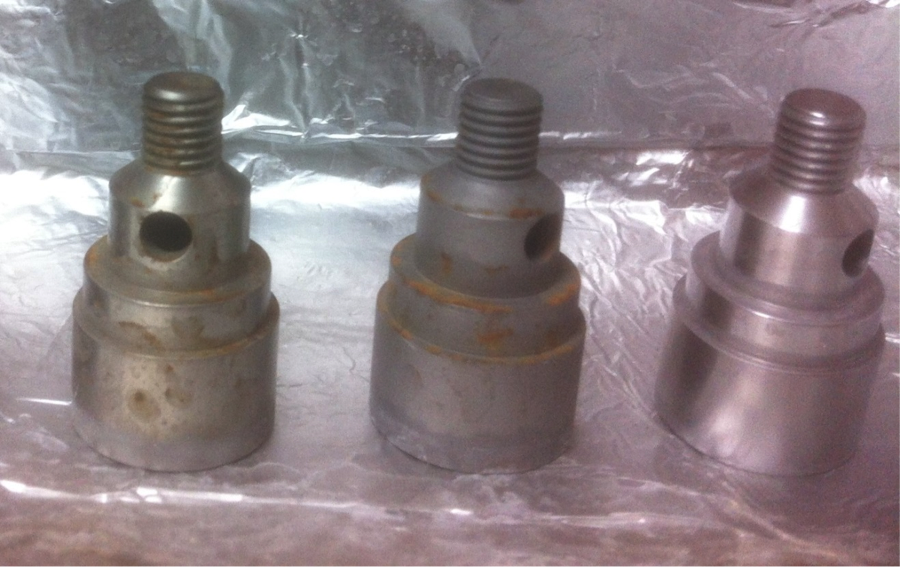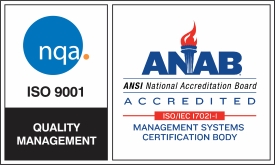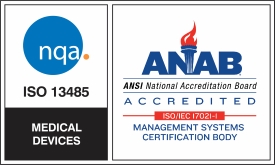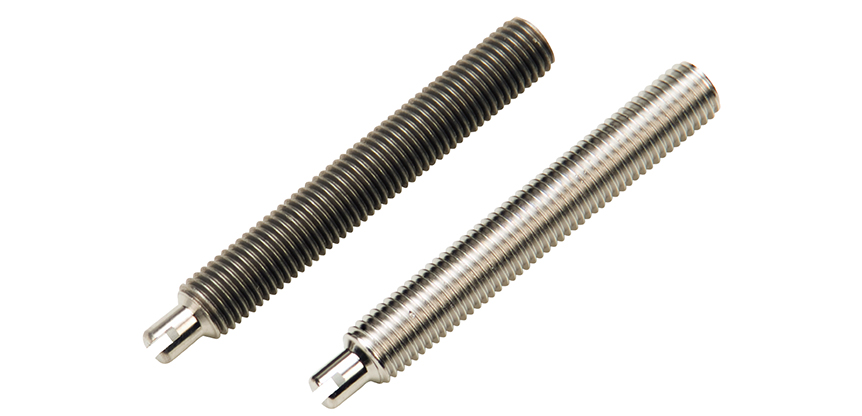Stainless steel components can be treated in a number of ways to lengthen their useful life, but the right choice may depend on the grade of stainless steel. What should manufacturers consider when they need to finish 416 or 440c stainless steel?
Properties of 416 and 440c Stainless Steel
These alloys are martensitic, meaning that they harden with heat treatment. Because the 416 alloy is easily machined, it’s used for parts that require a high level of machining and a significant portion of chromium – 13% or higher. This alloy is commonly used for components in electrical motors, nuts and bolts, pumps, valves, washing machine parts, studs, gears, and screw machine parts as well as surgical instruments such as bone reamers, drill bits and staplers. These components need to be able to withstand friction over time.
Similar to the 416 alloy, 440c is martensitic and has a high percentage of chromium. After heat treatment, 440c steel has the highest strength, hardness, and wear resistance of all stainless alloys due to its high carbon content. However, without additional finishing, 440c may only achieve moderate corrosion resistance, which can be detrimental over the life of a component.
This alloy is typically used for ball bearings, spindles, valves, surgical instruments, high-quality knife blades, drill bits and chisels. These parts need to be durable over time and resistant to corrosion and friction. Plus, tools for specific applications, such as medical devices or surgical instruments, need to be completely free of contaminants and burrs that can cause undesirable trauma to patients.
Complications of Passivating 416 and 440c Stainless Steel
Manufacturers typically have two choices when it comes to improving corrosion resistance on stainless steel: passivating or electropolishing components. Passivation, a finishing method that requires parts to be submerged in citric acid or nitric acid baths, helps prevent corrosion on components. It removes free iron that may result from stamping, machining or other manufacturing processes.
However, passivation is not appropriate for all grades of stainless steel or certain components. It is not the best choice for stainless steel alloys such as 440 c and 416, which are higher in carbon, sulfur, and phosphorus.
Because of the chemicals used in the process, passivation has the potential to cause “flash attack.” Instead of leaving the components resistant to corrosion, passivation can leave parts made from these hardened alloys with a scaly gray texture, or even turn them black. Flash attack causes roughness and pitting, making them less resistant to friction and more likely to corrode.
Electropolishing: The Better Choice for Finishing 416 and 440c Stainless Steel
Like passivation, electropolishing involves submerging metal parts in a chemical bath. However, components are treated with electricity, resulting in an electrochemical reaction that eliminates burrs, contaminants, free iron and improves micro-finish.
Unlike passivation, which only removes free iron from the surface of the metal, electropolishing removes the outer metal skin that has been altered during the machining process. This process eliminates embedded contaminants, provides a smoother finish, and enhances the chromium to iron ratio on the surface. The chromium-enriched surface means the finished part will be more resistant to corrosion and wear. Additionally, electropolishing will remove heat tint and oxide scale, which passivation alone can’t accomplish.
Real Tests & Results
Not only does electropolishing remove burrs and subsurface impurities, but it also offers 30 times greater corrosion resistance than passivation. In one case, three parts of the same design were subjected to corrosion tests. One part was raw stainless steel, one was treated with passivation, and the third was electropolished.

These parts sat in an oven at 190º F for seven days and were misted with water several times per day. At the end of the test period, both the raw part (left) and the passivated piece (center) showed rust. The electropolished component on the right, however showed no signs of corrosion, indicating how it would hold up in its intended application.
Electropolishing is the better choice for anyone looking for superior corrosion resistance, a smoother surface, and a burr- and contaminant-free part which functions better and lasts longer.





